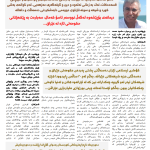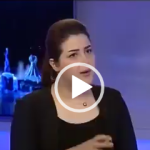Chapter 2
Before engaging in a historical and theoretical analysis of the party and the state, we must have a materialist view of the history of communism itself.
First, the history of communism itself is wrapped in a metaphysical conception, and this history has become the history of groups and groups of communists and different political currents and organizations, and the history of the class struggle of the workers, which is the basis of communism, has been forgotten and every group considers their history as a history of communism.
Therefore, every viewer has the right to be confused and say that can’t see the forest for the trees.
The working class in capitalism, like the bourgeoisie in the serfdom system, struggle against the slavery imposed on it by the capitalist system. This class has tried various theories, tactics, and revolutions, including communism, to overcome obstacles and gain power and end the capitalist system.
But it is not communism and the politics of communism that create these histories and revolutions, but it is the development of capitalism and the development of the class struggle of the workers that casts communist and socialist efforts in a historical form, which, according to Marx, efforts “If it is not in the historical context of working class development, you will see how reluctant it is to achieve the ultimate goal, and vice versa, how invincible it will be if it is in the historical context of the working class movement.” Thus political decision was inserted into a framework of historical change, which did not depend on political decision.”[1]
This materialist view clarifies two things for us:
First, although various political endeavours do not name a class, but period, personalities, parties, and political currents, they are, in fact, the result and remnant of the historical development of the working class. Thus, behind the names and history of Marx, Lenin, the Manifesto, the Paris Commune, the Russian October revolution, and the various communist parties, we must see this historical development achieved by the working class at different stages of capitalist development, and socialist efforts have been shaped by the needs of the class struggle at this stage.
We can understand these efforts by analysing the framework of this step. We cannot set communist efforts for all stages as a fixed and unchangeable form and standard and dogma, and divide the labour movement according to these historical forms called Marxism, Bolsheviks, Communards and Trotskyists, workers’ communists, democratic socialists, etc.
Such a non-historical view, which replaces communism and communists with the class struggle of the workers and makes them the representative of that history and class, is a common view because of the process of separation and the departure of a large section of class intellectuals and politicians from the working class itself and the class struggle and their transformation into a propaganda group or representative of other classes.
But the materialist view of the class struggle is quite the opposite of the metaphysical view, which sees the history of communism as the history of established groups and their events, and with all the different self-textures of today within the communist movement that historical forms such as Marxism, Bolshevism, syndicalism and anarchism are consider to be a stable and sacred form, and on the basis of which they analyses the world today and the class capitalist struggle differently. The work of these stable forms is like “The Bed of Procrustes”[2] who cut the body of this movement exactly according to the size of their own ideological board and create various organizations and parties from it. While the manifesto shouts:
“The Communists do not form a separate party opposed to the other working-class parties.
They have no interests separate and apart from those of the proletariat as a whole.
They do not set up any sectarian principles of their own, by which to shape and mould the proletarian movement.”[3]
Second, each of these communist efforts is part of a historical process, which never becomes the beginning or the end of the history of the class struggle, but each of which has its own role and influence in the historical process, which is constantly evolving and changing, either rising or failing.
Marx considers this to be one of the dialectical features of the class struggle of the workers, which is unlike the previous classes.
“The social revolution of the nineteenth century cannot take its poetry from the past but only from the future. It cannot begin with itself before it has stripped away all superstition about the past. The former revolutions required recollections of past world history in order to smother their own content. The revolution of the nineteenth century must let the dead bury their dead in order to arrive at its own content. There the phrase went beyond the content – here the content goes beyond the phrase. On the other hand, proletarian revolutions, like those of the nineteenth century, constantly criticize themselves, constantly interrupt themselves in their own course, return to the apparently accomplished, in order to begin anew; they deride with cruel thoroughness the half-measures, weaknesses, and paltriness of their first attempts.”[4]
This is the dialectical feature of the class struggle of the workers. “The German working-class movement is the inheritor of German classical philosophy.” says Engels.[5]
Contrary to this dialectical method, by which we must critique the entire history of the 19th and 20th centuries so that contemporary revolutions can learn from the shortcomings and weaknesses of the Commune and the October revolution and the reasons for their failure, yet a metaphysical and non-historical view of the communist movement is dominant. This view not only divides the working class by intellectual forms, but also transforms communism itself into something different from the working class and the class struggle that is taking place in the arena of freedom squares today. Thus, it can never solve the problem of the separation of communism from the worker, which it has established in its mind for the demarcation between communist and non-communist. It thinks that it needs a pure and orderly communism to be able to unite the two, like the followers of religion who return to the texts and behaviour of the prophets to save the world today.
To understand the history of the working class and the intellectual and political changes and differences that have arisen in this class, we must look at the history of the bourgeoisie as a revolutionary class against the master-servant system. We see that based on the evolution of the economic position of the bourgeoisie in the Renaissance, its continuous intellectual and political endeavour took several centuries to complete the political formations of its system. It enters the war against the Catholic Church through Lutheranism, as an organization of the lord-servant system, and also through Micaville against the political thought of the lord and the feudalism and the church, and introduces political science into the real world, and then through each of John Bogdan, Thomas Hobbes, Jon Luke, Montysko, Rousseau, Bentham, and Stuart Mill, and dozens of philosophers, jurists, politicians, and political movements, thought and theoretically work on the concepts of servitude, the power of law, the form of government, the separation of religious power from political power, the separation of legislative and executive powers and the judiciary and the state and order and rights were formulated and settled. The process of formation of the state and the apparatuses of the capitalist system has taken place as a result of several centuries of intellectual, political and military conflict between the bourgeoisie and the against the ideology and dominant beliefs of the feudalism.
Along with the needs of imposing, maintaining, and developing the economic power of the bourgeoisie and the effect of the class struggle on them, the form of the party and the government and the bourgeois state has changed and the current form of parliament and government, the judiciary, the intelligence and the army institutions has taken over and created various devices at the global level of the UN and the World Bank.
The party and the government have for the working-class also gone through two centuries of intellectual, theoretical and practical competition. In each period the working class has taken several steps towards progress and in the constant struggle and revolution has tested the truth and reality of theories and policies and proved them, or in its failures its ambiguities and mistakes have been revealed to it.
The various attempts of a class to end capitalist slavery have manifested themselves as a historical current in the forms of the International, the Syndicate, the Council, the Trade Union, the Party, the Revolution, the strike, and the government. And is in a historical process of preparing itself as an alternative to this exploitative system. Even though “the working class is increasing in number every day and is becoming organized and united through the many mechanisms of its capitalist production”[6], in the class struggle new issues such as the party, the International, the government, the council and Syndication and culture and so on.
Communism emerged with the anti-feudalism bourgeois revolutions as a newly arrived dissatisfied workers’ movement and very simply showed itself in the alternative cover of capitalism. Just as the bourgeoisie needed centuries of intellectual, political, and economic struggle to break free from the shackles of feudalism, so the workers are in a constant historical struggle to prove themselves as an alternative to capitalism and to free themselves from Liberate the intellectual, political, and economic chains of capitalism.
This class has stamped its mark on the history of the capitalist world with several struggles in the 19th and 20th centuries. Communism, with its experiences in the intellectual, political, and social fields, has become one of the movements influencing the turbulent and crisis-ridden formation of the capitalist system. Each stage of these intellectual and political efforts should be seen as a reflection of the political and economic situation of that era and the struggle needs of that period, not as a form and dogma in which history gets stuck and now communism must answer those problems. And these are the problems that the working class faces in the struggle and organization and struggle of the neoliberal, populist, and nationalist bourgeois movement, not the struggle that Marx had with Bakunin, or Lenin with Kautsky, or Trotsky with Stalin. As the bourgeoisie does not say that the views of Hobbes and Rousseau speak the last word of the state and the order and the social covenant. Undoubtedly, social classes in the political struggle of the real world change their law and system by force or in the interests of their own class. Therefore, the working class must constantly change the type of attitude and vision and the development of the tools of struggle.
A materialist view of the history of the working class tells us that this class emerged with the emergence and expansion of the bourgeoisie and the industrial revolution, and that the two classes together created the capitalist system. The class difference between the two classes was gradually highlighted in the middle of the war to end the remnants of the feudalistic system, leading to a war between the two classes, and in any war waged by the bourgeoisie against the monarchy and feudal system for more democracy and freedom, the working class also participated and tried to make these achievements not only for the bourgeoisie, but also for it. The working class, like the bourgeoisie of the Renaissance and the Enlightenment, carried out a series of revolutions in the 19th and 20th centuries and had a continuous process of struggle and pressure against capitalism. This class has emerged based on the economic position and level of capitalist growth and the level of consciousness and organization of workers in it and the worldview of the communist world and equality and freedom, and the class of intellectuals, philosophers, thinkers, and activists of this class have the same demands and they have stated the goals. Communism, as part of this intellectual and political endeavour, grew in line with the political experiences and revolutionary actions of the workers, and went from imaginary communism to the level of political, economic, and philosophical theory, and then to scientifically analyses the capitalist system. And it addressed the differences and crises and the means of changing it to a communist system and presented them.
The concept of the Workers’ and Communist Party was found in the history of this political and class rivalry. First, secret communist groups and public popular organizations were formed, and then the importance of integrated, global, and global organizations of this class emerged, and the First International and the Social Democratic and Workers’ Parties emerged in Europe, Russia, and the United States.
This concept had two main features, first, that the party was concerned with the organization of the whole working class and did not mean a particular party among the workers. That is why in the First International and the German Social Democratic Party, we see different views, currents and the parties work together as a social party and a political power, despite the political and intellectual rivalry between them. The Communist Manifesto of Marx and Engels when she says: “The Communists do not form a separate party opposed to the other working-class parties. they always unite the whole class and everywhere represent the interests of the movement as a whole.”[7] “This stage is interpreted. This definition of the party is the basis for understanding the concept of the workers ‘and communists’ party.
Second, those parties and organizations that have merged in the struggle of the working class for the workers to come to power and the anti-capitalist socialist revolution. Such as the merger of the First International with the Paris Commune and its constant connection with the political and economic struggle of the European workers, or the Social Democratic parties and the parliamentary struggle and the workers’ strike and demonstrations and the presence of hundreds of thousands of workers in these parties and participation in the October Revolution and the German revolutions. And nationwide strikes in Italy, Britain, Norway, and other countries.
At this level of growth and development of the workers ‘and communists’ movement as a political and popular movement, and especially of the Paris Commune, the concept of the state becomes one of the main parts of this struggle. Later in World War I, the movement entered a completely different phase and faced a historic task. For the modern world, this world war means the collapse of all the principles of the world of liberalism and human rights and bourgeois liberties, against which a wave of revolutionary discontent arose and the workers’ and communists’ movement faced a historic confrontation with this world war and capitalism. And presented the Communist as an alternative and solution for human society. Thus, once again, the question of the workers’ revolution against the power of the bourgeoisie and the seizure of power and the creation of a communist society becomes a daily need.
“The State and the Revolution” When Lenin says, “The tools of the bourgeois state must be destroyed and a state created which relies on the general arming and direct representation of the workers and peasants,” [8] is in fact the developed stage of communism and the working-class states.
At this stage we face two issues: first; A demarcation within the labour movement is based on tactics against world war and the bourgeois state.
A nationalist current within the labour movement supports one side of the war against the other, and at the same time supports reformism in the face of a revolutionary change of power.
Second: In Russia, where the grounds of the social revolution are reviving from the beginning of the twentieth century and three revolutions occur in a row, and the labour and communist movements show an example of the socialist revolution and the model of Bolshevism in the workers’ state.
This is a turbulent and difficult period. In this period, both the concept of party and state enter a stage of social functioning, which encompasses a comprehensive political and economic change in Russian society and has an impact on the world. The model of the party and the state of Bolshevism in the 20th century and still is seen as two immutable and sacred models, and there is no fundamental critique of these models and alternatives. Such a metaphysical and non-historical view of the party and the state is the subject of this research. Here the materialist view of the role and history of the working class is of vital importance, so it must have a correct and scientific analysis of this history and present reality and answer questions that are like a blind alley to the working class and the future in these struggles. The attitude of the party and the government are rings of the chain that we use in these analyses to open the door to clarify problems and issues.
Here we must look more closely at the changes that have taken place between the two concepts of party and government in order to know how they differ from the basic and simple principles before this period and our contemporary world.
[1] https://asokamal.com/index/?p=2515
Page 86 How to Change the World, Eric Hobsbawm
[2] https://www.encyclopedia.com/literature-and-arts/classical-literature-mythology-and-folklore/folklore-and-mythology/procrustes
[3] https://www.marxists.org/archive/marx/works/1848/communist-manifesto/ch02.htm
[4] https://www.marxists.org/archive/marx/works/1852/18th-brumaire/ch01.htm
[5] https://www.marxists.org/archive/marx/works/1886/ludwig-feuerbach/ch04.htm
[6] https://asokamal.com/index/?p=2515
How to Change the World, Eric Hobsbawm
[7] https://www.marxists.org/archive/marx/works/1848/communist-manifesto/ch02.htm
[8] https://www.marxists.org/archive/lenin/works/1917/staterev/index.htm








Add Comment